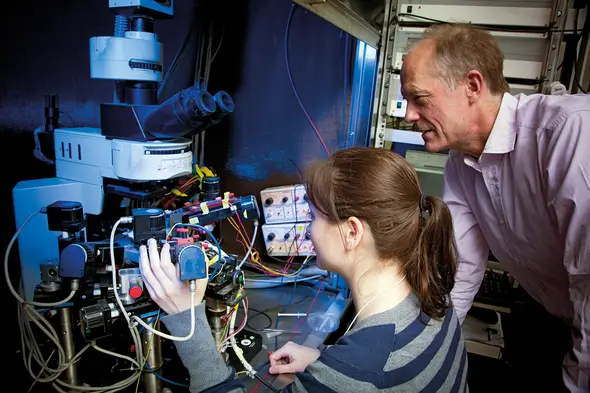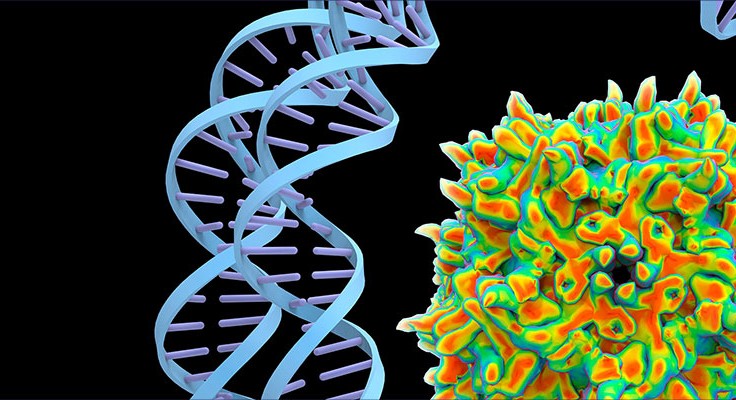Novel Gene Therapy Holds Promise for Fatal Developmental Epilepsy Syndrome in Children
Scientists at Tel Aviv University and other institutions have made a significant breakthrough in the treatment of Dravet syndrome, a severe and fatal developmental epilepsy syndrome that predominantly affects children. Dravet syndrome is caused by a spontaneous mutation in the SCN1A gene therapy during fetal development, resulting in severe epilepsy, developmental delays, cognitive impairment, and an increased risk of early death. Existing medications have limited effectiveness in managing the condition.
The researchers conducted preclinical studies using mice with Dravet syndrome. They developed an innovative gene therapy approach involving the injection of a virus carrying a normal SCN1A gene into the brains of the mice.
The therapy demonstrated promising results, including improvements in epilepsy symptoms, protection against early death, and significant enhancements in cognitive abilities. Remarkably, the treatment proved effective even after the onset of severe epilepsy in the mice.
The researchers are optimistic that this gene therapy technique could extend beyond Dravet syndrome. They believe that the tools developed in this research can be adapted for other genetic epilepsies.
Offering hope for patients with similar conditions. Additionally, this breakthrough may pave the way for the development of similar treatments for various rare diseases.
Advancing Toward Clinical Application

Led by Dr. Moran Rubinstein and graduate student Saja Fadila, the research team aims to transition this innovative gene therapy from the laboratory to clinical settings.
They anticipate that this groundbreaking treatment will benefit children affected by Dravet syndrome. And potentially provide a viable therapeutic option for other rare genetic epilepsies.
The researchers are hopeful that this treatment will eventually receive approval for use in clinical practice.
The study conducted in collaboration with researchers from Tel Aviv University. The University of Montpellier in France, and other institutions in France, the United States, and also Spain. The findings published in the Journal of Clinical Investigation, highlighting the global impact of this research.
Gene therapy involves using engineered viruses as carriers to deliver normal genetic material into the patient’s body. Enabling the correction of abnormal genes and restoring normal cellular function.
Due to the size of the SCN1A gene, the researchers utilized a specific virus, Canine adeno virus type 2, capable of carrying and transferring large genes.
To ensure direct delivery to the affected brain cells. The carrier virus was inject directly into the brains of the Dravet syndrome mice.
Significance of the Gene Therapy Research

The treatment’s success in restoring normal gene function in damaged neurons represents a crucial milestone in addressing Dravet syndrome.
As the mutation within the SCN1A gene can occur at different locations. Injecting the complete gene provides a uniform treatment approach suitable for all individuals with Dravet syndrome.
Furthermore, the study demonstrated the virus’s ability to infect multiple nerve cells in the brain, enhancing its therapeutic efficacy.
The researchers plan to pursue further studies to determine whether this gene therapy approach can be apply to other genetic neurodevelopmental disorders.
The platform developed in this research provides a flexible framework for future genetic therapies, offering the potential for treating additional diseases.
The team has filed a patent for their innovative gene therapy approach, marking a significant step toward bringing this groundbreaking treatment to clinical practice.
Is Gene Therapy Approved by FDA?

Indeed the FDA has granted approval, for gene therapies, which represents an advancement in the field of innovative medicine. These approvals primarily target disorders and certain types of cancer treatments.
Notable examples include Luxturna, a remedy for inherited vision loss and Zolgensma designed for atrophy. The FDAs endorsement is based on evaluations of safety and effectiveness.
However it’s important to note that the list of approved therapies remains limited as research and development, in this field continue to progress. The FDA is actively working on establishing guidelines to ensure the progression of gene therapy.
Why is Gene Therapy Not Permanent?
The duration of gene therapys effectiveness can vary depending on the method used and the specific cells targeted. Certain therapies have the potential to permanently integrate material into a patients DNA resulting in lasting impacts.
However there are instances where the effects may only be temporary. This can be attributed to factors such, as natural cell replacement within the body, immune responses and challenges in integrating the therapy into the host genome.
Moreover during cell division introduced genes might not replicate flawlessly over time leading to a decline, in benefits. Consequently determining the permanence of gene therapy remains an continually evolving aspect of its application.





